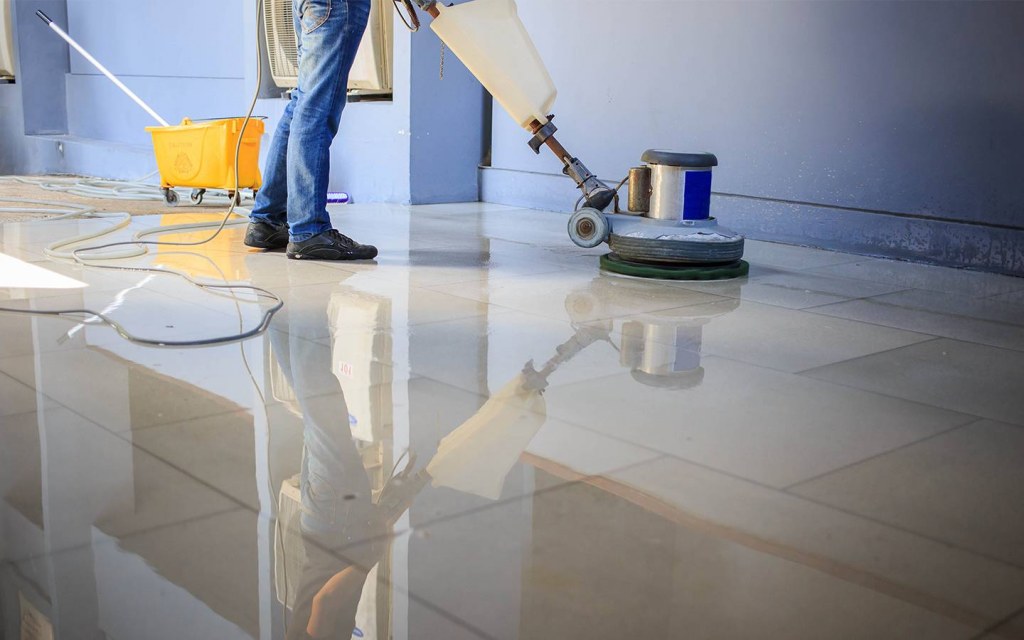
Image Source – Google
Travertine is a natural stone that has been used for centuries in various architectural and decorative applications. Known for its timeless elegance and durability, travertine is a popular choice for flooring in both residential and commercial settings. Over time, however, travertine floors can lose their luster due to wear and tear. This is where travertine floor restoration comes in, to bring back the beauty and elegance of this stunning stone.
The Beauty of Travertine Floors
Travertine is a type of limestone that is formed by mineral deposits from natural springs. Its distinctive look is characterized by unique patterns, earthy tones, and subtle variations that add a touch of sophistication to any space. Here are some reasons why travertine floors are highly sought after:
- Natural beauty: The natural variations in color and texture make each travertine floor unique.
- Durability: Travertine is a sturdy and long-lasting material that can withstand heavy foot traffic.
- Timeless appeal: The classic look of travertine never goes out of style, making it a timeless choice for flooring.
The Need for Restoration
While travertine floors are known for their durability, they are still susceptible to wear and tear over time. Common issues that may require restoration include:
- Scratches and scuffs
- Stains and discoloration
- Etching from acidic spills
- Loss of shine and luster
The Restoration Process
Travertine floor restoration involves a series of steps to repair, clean, and polish the surface of the stone. Here is an overview of the typical restoration process:
- Assessment: A professional assesses the condition of the travertine floor to determine the extent of the damage and the best course of action.
- Repair: Any cracks, chips, or damaged areas are filled and repaired to restore the integrity of the floor.
- Cleaning: The floor is thoroughly cleaned to remove dirt, grime, and stains using specialized cleaning solutions and equipment.
- Honing: Honing involves sanding the surface of the stone to remove scratches and etch marks, resulting in a smooth and uniform appearance.
- Polishing: The floor is polished to enhance its shine and luster, giving it a luxurious finish.
- Sealing: A sealant is applied to the travertine to protect it from future damage and make it easier to maintain.
Benefits of Restoration
Restoring a travertine floor can offer a range of benefits, both aesthetic and practical:
- Revitalized appearance: Restored floors look like new, enhancing the overall aesthetics of a space.
- Increased durability: The sealing process can help protect the travertine from scratches, stains, and other damage.
- Easier maintenance: Sealed floors are easier to clean and maintain, reducing the need for frequent cleaning and repairs.
Choosing a Professional
Travertine floor restoration is a specialized process that requires skill and expertise to achieve the best results. When choosing a professional for the job, consider the following factors:
- Experience: Look for a restoration specialist with experience working with travertine floors.
- Portfolio: Review examples of past projects to assess the quality of their work.
- References: Ask for references or read online reviews to gauge customer satisfaction.
- Services offered: Ensure that the professional offers a comprehensive range of restoration services to meet your needs.
Maintaining Restored Floors
After investing in travertine floor restoration, it's important to follow proper maintenance practices to prolong the life and beauty of the floors. Here are some tips for maintaining restored travertine floors:
- Regular cleaning: Sweep or vacuum the floor regularly to remove dirt and debris that can scratch the surface.
- Avoid harsh chemicals: Use pH-neutral cleaners to avoid damaging the sealant on the travertine.
- Protect the floors: Place mats at entryways and use soft pads on furniture to prevent scratches and scuffs.
- Reapply sealant: Periodically reapply sealant to maintain the protective barrier and keep the floors looking their best.
With proper care and maintenance, restored travertine floors can continue to exude timeless elegance for years to come.
